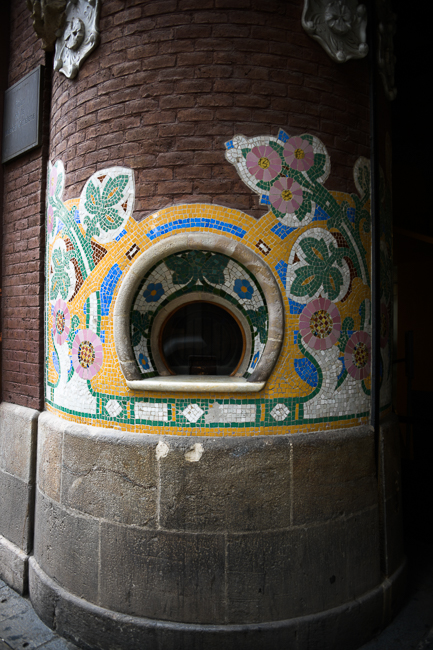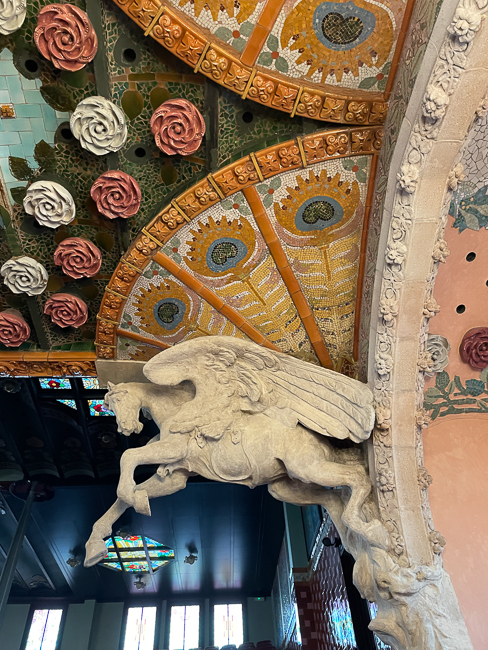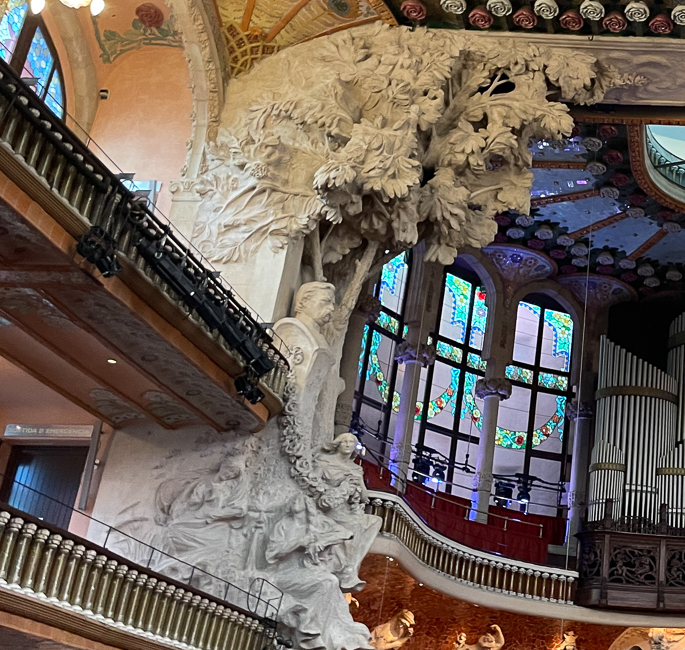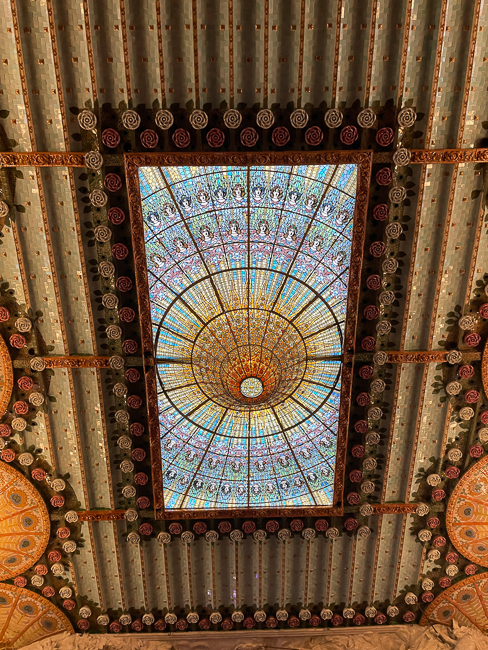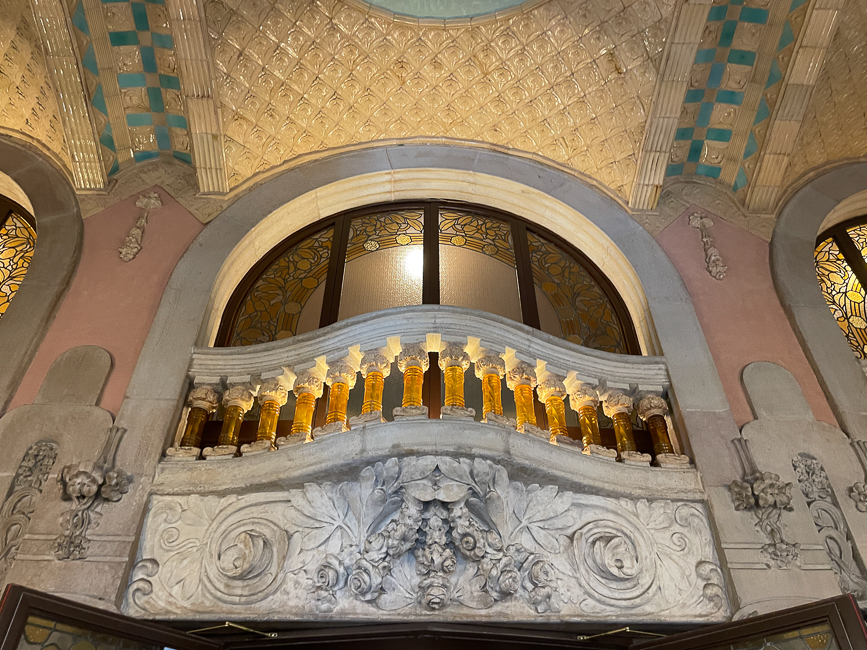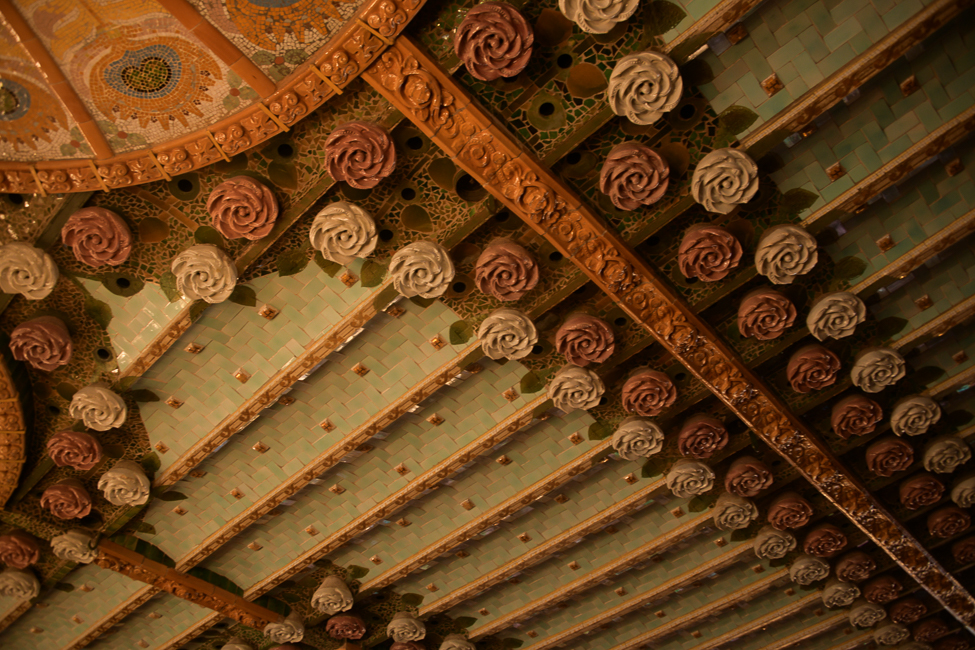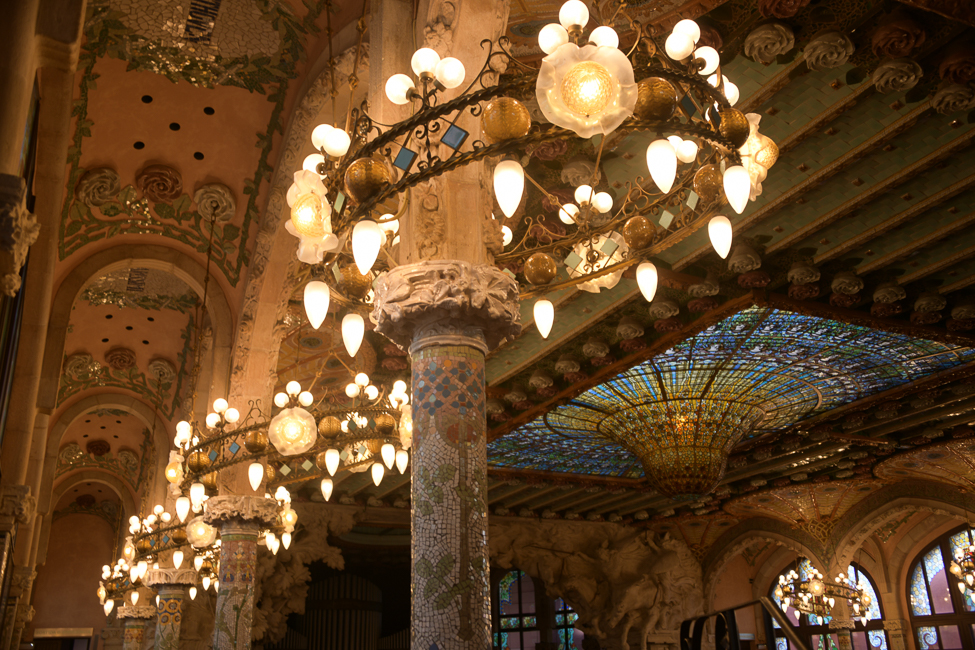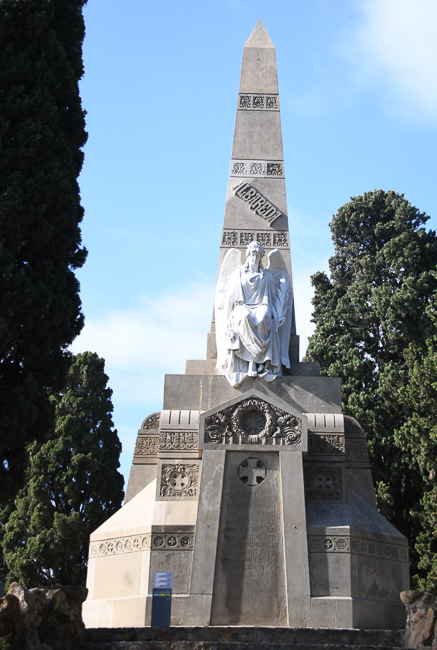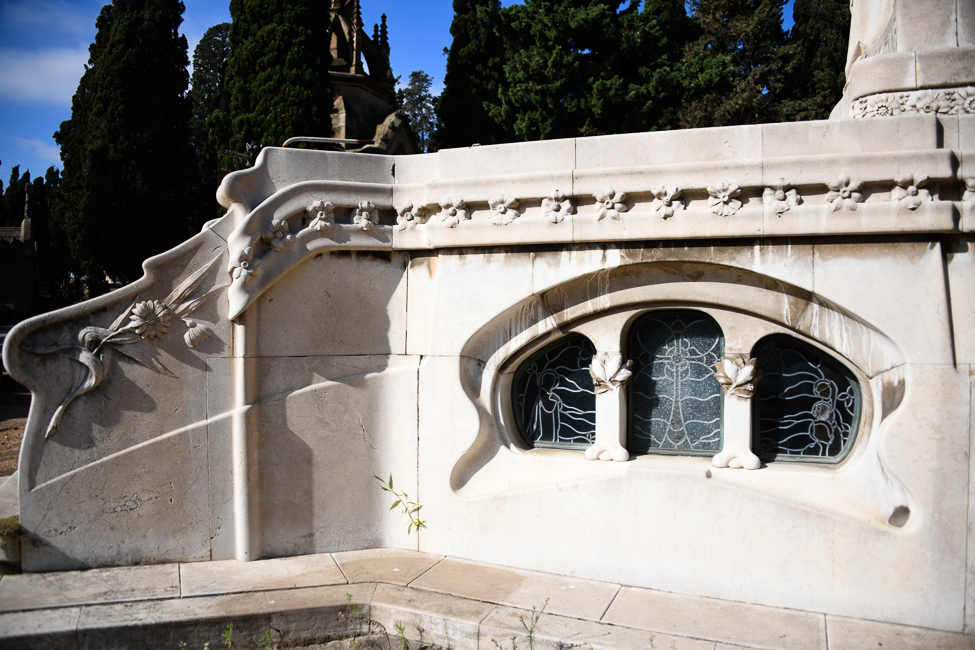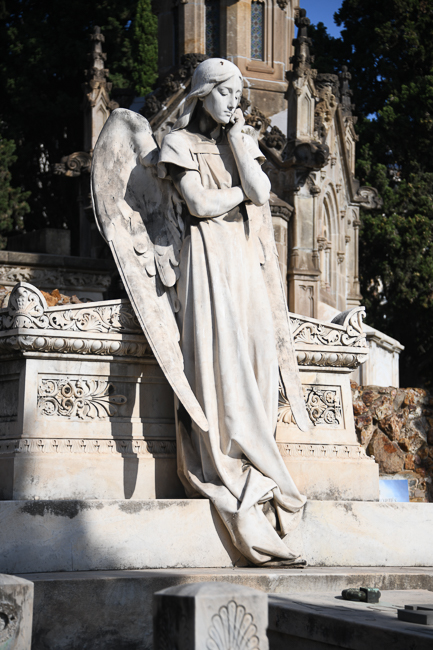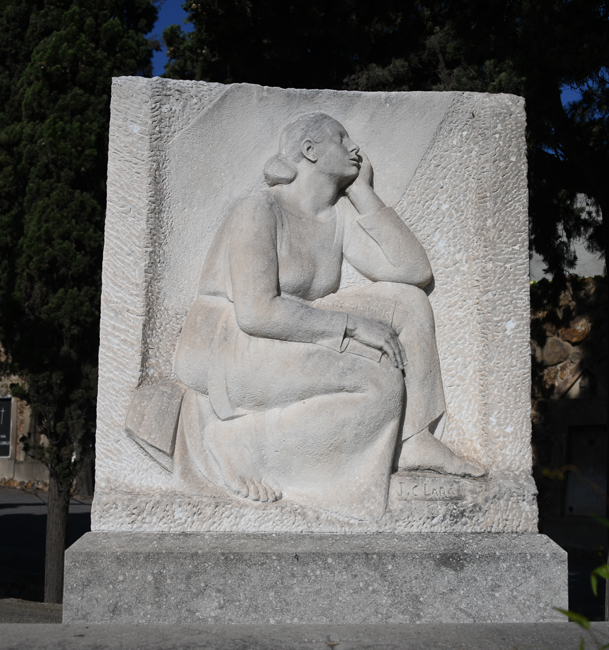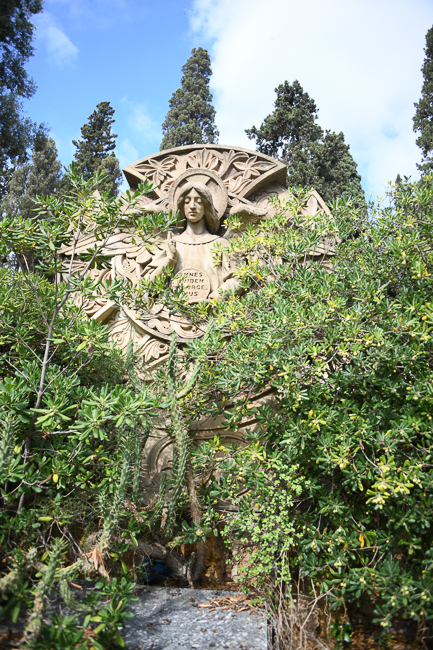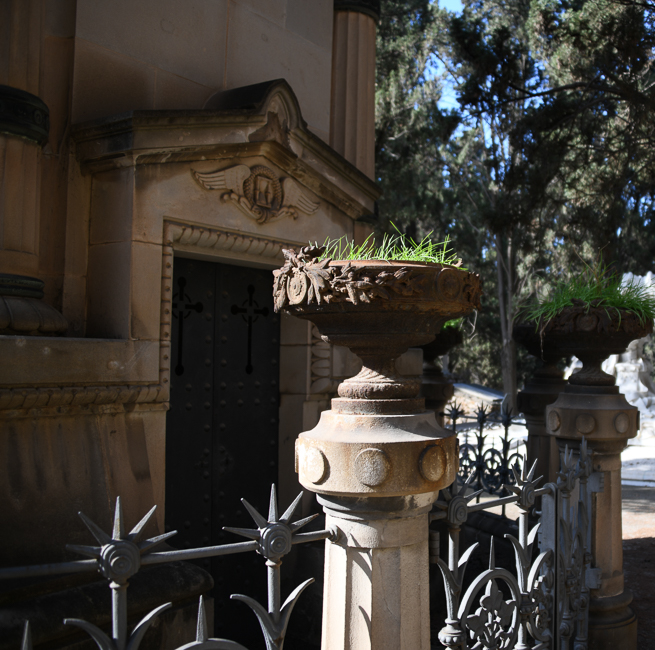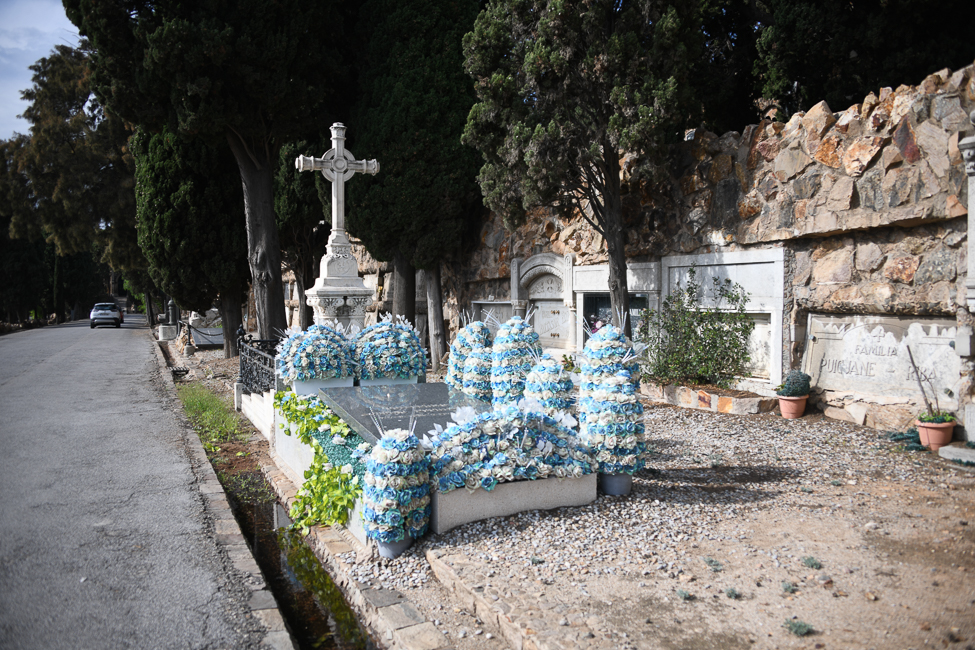October 2021
Palau de la Musica Catalana
The Palau de la Musica Catalana, a stunning example of Catalan Art Nouveau, opened in 1908. It was designed by architect Lluís Domènech i Montaner.
The ticket booth alone should be a clue as to what an amazing spectacle you are in for.
All the sculptures on one side of the auditorium represent the “Ride of Walkiries” and on the other side, the figure of Beethoven, sculpted by Pau Gargallo and Dídac Massana.
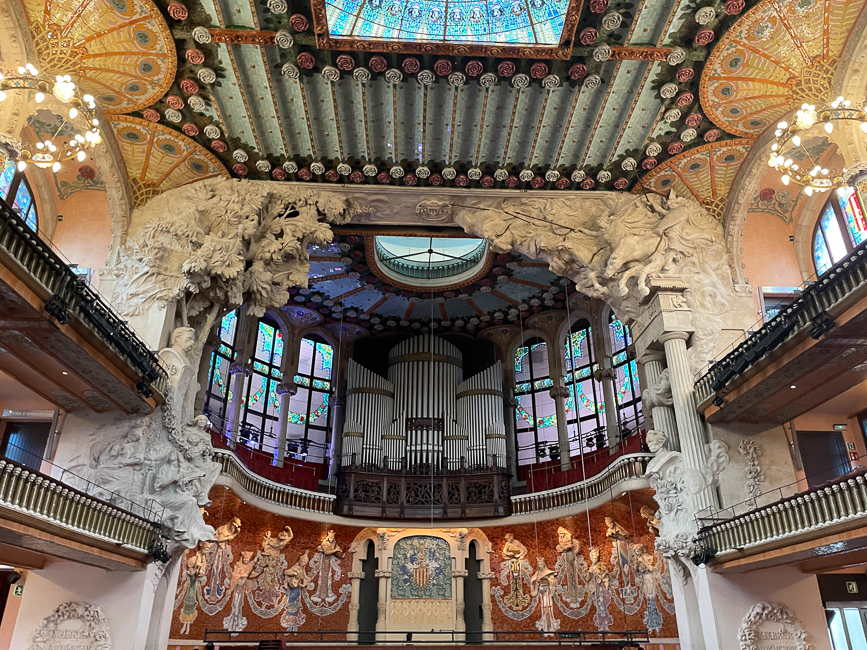
The stained glass skylight was made by Rigalt and Granell.
The balconies are all made of glass balusters topped with a stone coping.
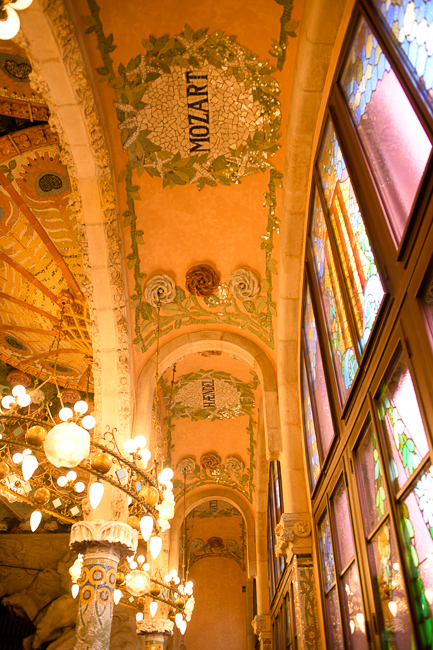
The building is abundant in pink roses, a reference to the patron saint of Catalonia, Saint George.
The façade is made of red brick and decorated with mosaics from Lluís Bru.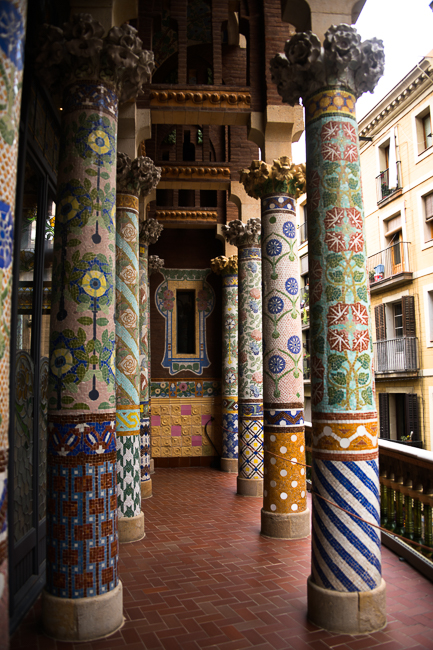
Cementiri de Montjuïc
Opened in 1883 this cemetery was necessary when the older cemetery at Poblenou became too full. The Cementiri de Montjuïc contains over one million burials and cremation ashes in 150,000 plots, niches and mausolea.
I love cemeteries, they are art galleries, history books and so much more. Cemenetiri de Montjuïc, like so many cemeteries today understands this and has three routes to take, historical, military and art. I tried following the art trail as best I could, with a personal aim of ending at the gravesite of Joan Miró. They have lovely maps, but considering the cemetery is 57 acres, you needed a magnifying glass to read them, so I did my very best to find the important plots by famous artists and architects, although they are all Spanish so basically unknown to me.
Here is just a sampling, some famous and some I was simply drawn to.
The first is the architect of the cemetery Leandre Albareda i Petit who designed the cemetery.
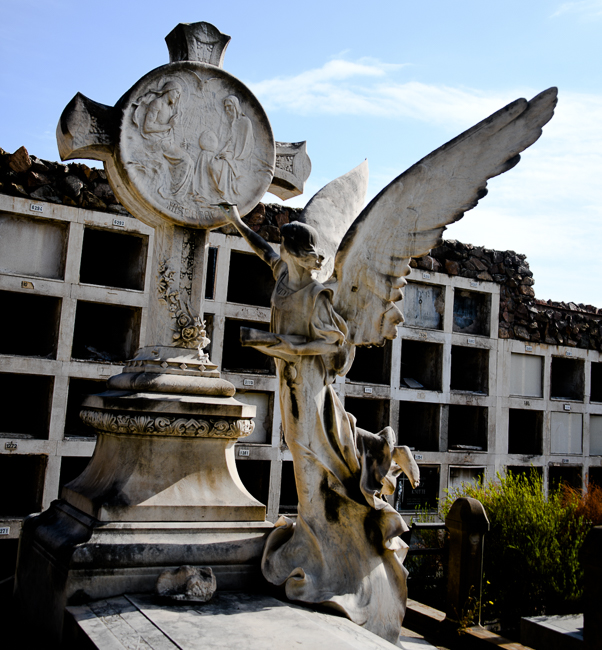
Mausoleum of Ramon Carbo. Sculptor: Eusebe Arnaui Mascort Architect: Pere Garcia i Faria – 1905
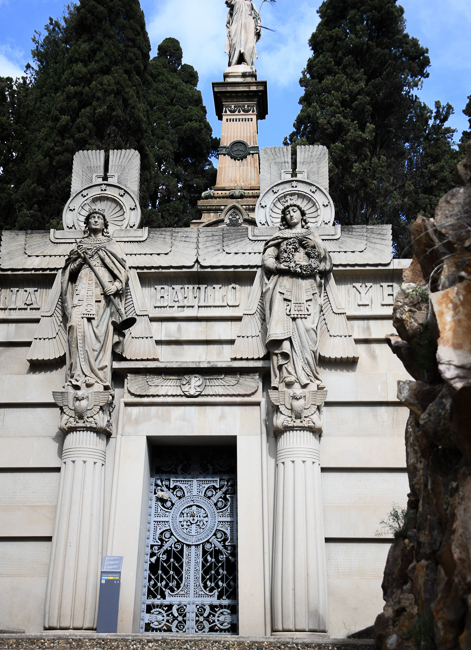
Burial Vault of the Batlló Family. Architect: Josep Vilaseca i Casanovas Sculptors: Manuel Fuxa i Leal and Enric Claraso i Gaudi – 1889
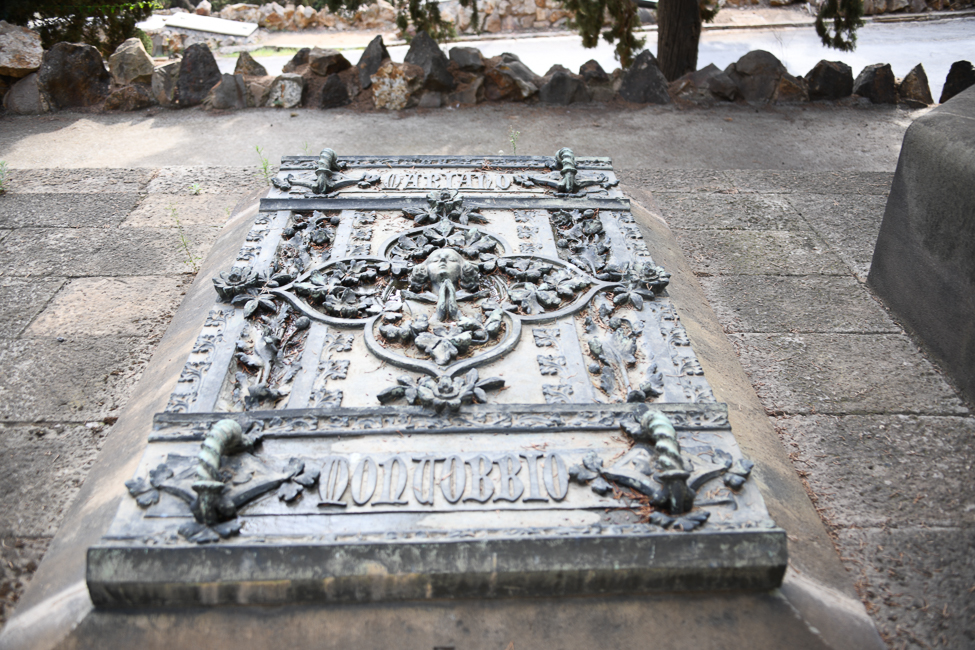
One side of the Grave of the Montobbio Brothers. Architect: Enric Sagnier Foundry: Masriera-Campins 1898

This is a window on the Collaso i Gil Mausoleum. The sign mentioned the stained glass was by Antoni Rigalt (Stained Glass Maker of the Palau de Musica) Several of the windows had been broken, so I was able to peek in and see one that was lit from behind. – 1901.
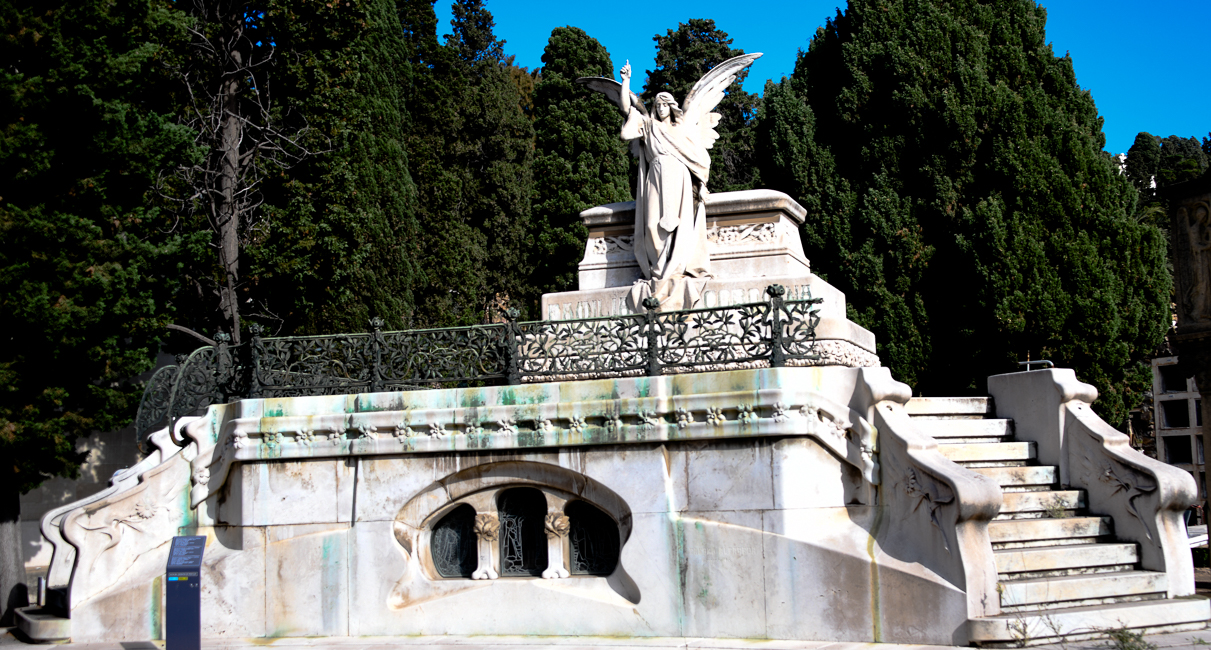
This stunning example of Catalan Modernisme is the mausoleum of Eduard Sevilla i Montoliu/Coromina – Architect: Leandre Albareda i Petit (Designer of the Cemetery as well) Sculptor: Rafael Atche

This Amatller Mausoleum caught my eye for its stunning gate. – Architect: Emili Sala i Cortes – Sculptor: Eusebi Arnau i Mascort – 1911-1915
A sampling of the pieces that just grabbed me:
